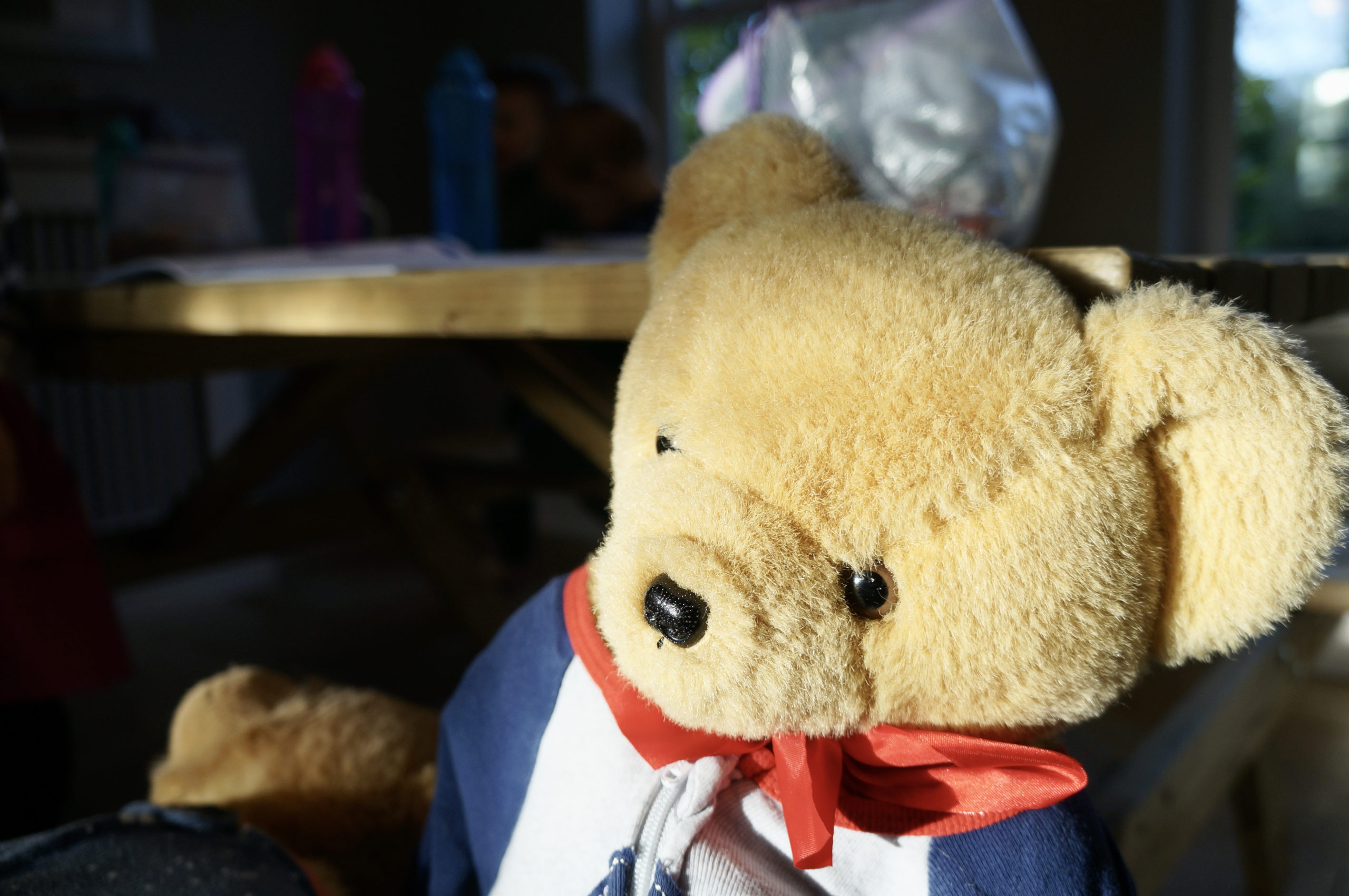I am a major believer that you don’t need much to homeschool. I have even heard one veteran Mum say that all you need is a library card and a pencil. Whilst that is technically true, I would add a few things to that list, one of which is a table. If you have a kitchen table then you are good to go.
Now, full transparency, there is a strong correlation between the number of children that we welcome into our family and my increasing desire for a dedicated school space. However, as the person who has been educating four of our six children around our kitchen table each day, I can stand by the fact that you do not need a schoolroom.
We are in our seventh year of home education so I felt that it was time to share a little about how we make that work practically in a busy family home with a variety of grades, ages and stages.
Firstly, our kitchen table isn’t any kitchen table, it is a ‘handmade with love by Dad’ kitchen table. J built this table when we were in California and boy does it work hard (the table and J). A lot of life happens around this table and I am very happy to have this beauty in our home. Eating, schooling, entertaining, painting, baking, singing, reading, discipling, celebrating… it all happens around this thing.
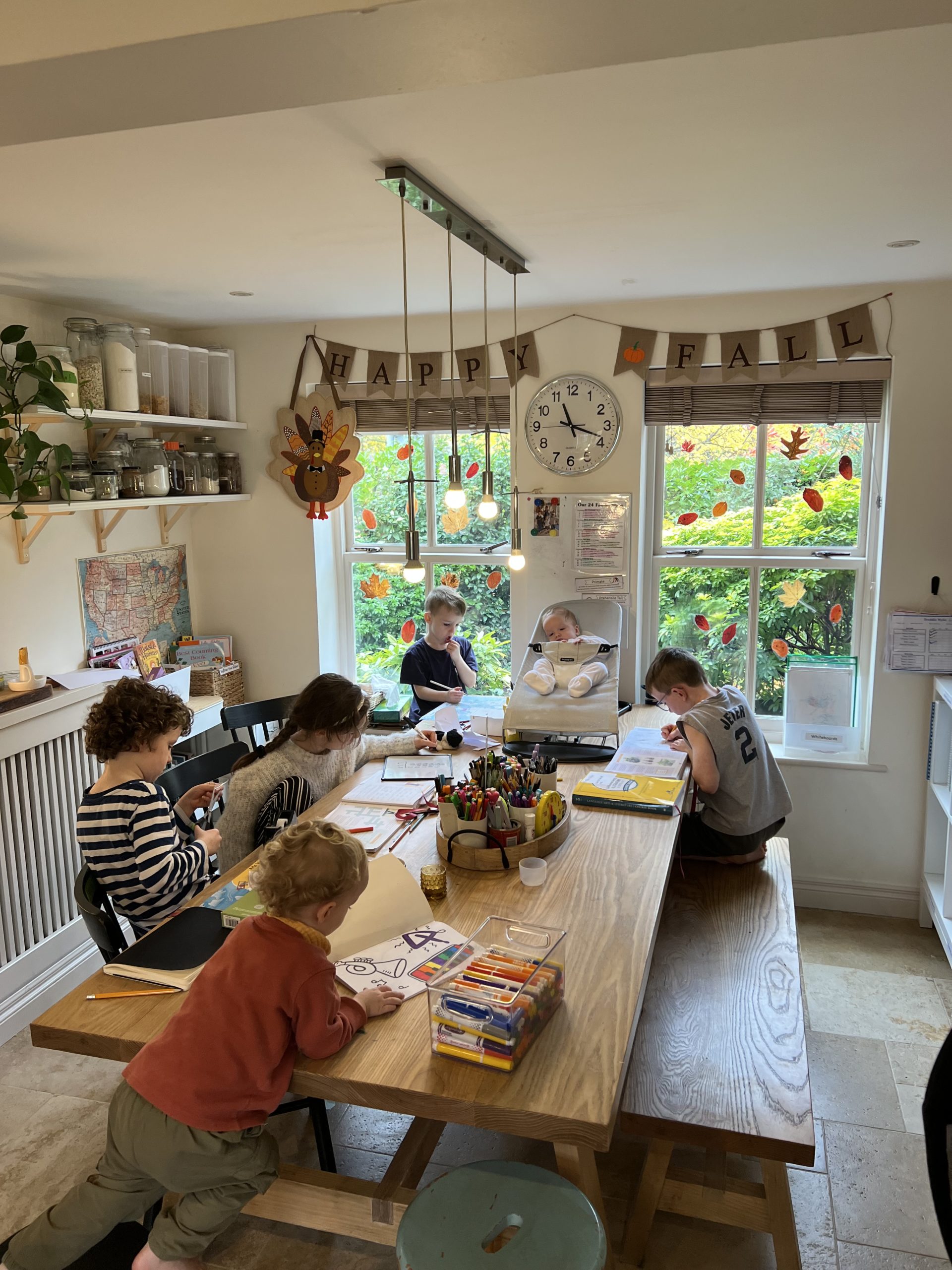
We really wanted to invest in a solid wood, big, strong table that could fit our growing family (and some), however a couple of kids later we are at risk of growing out of this 8 foot beauty. I am sure that Mr. Wylie will be thrilled when the day comes that I commission him to go again… but bigger. Some of our boys have caught the woodworking bug along the way and so I have no doubt that it will be a team effort next time.
Years later this thing is home to many a scratch, scribble and Sharpie stain, but we still love it. We keep saying that it needs a sand and refinish but we can’t spare even a couple of days without her in action! She is a real work horse.
I know that space (or lack of) is a concern for many new homeschooling families as all of the books and resources and supplies can really add up. I wanted to show you how we fit everything that we need around our kitchen table and how we make this small space (our dining area is only 8 foot by 11 foot) work for both school and family life.

I do lean more on the minimalist side when it comes to our home and what we hold onto. However when it comes to homeschool stuff it is difficult to get rid of much – especially when you are teaching multiple grades and wanting to hold onto things for the next child, and the next… and the next. So far, I have used the same curriculum with most of the kids and so most of the books and resources are stored and passed down each time.
I wanted all of their daily subjects to be easily accessible for them and for it to be clear and simple for them to tidy up independently. Each child has a wire folder with their name and subjects labeled on the side. That way we are not spending time each day sorting and finding books – they can just grab their folders and get started.
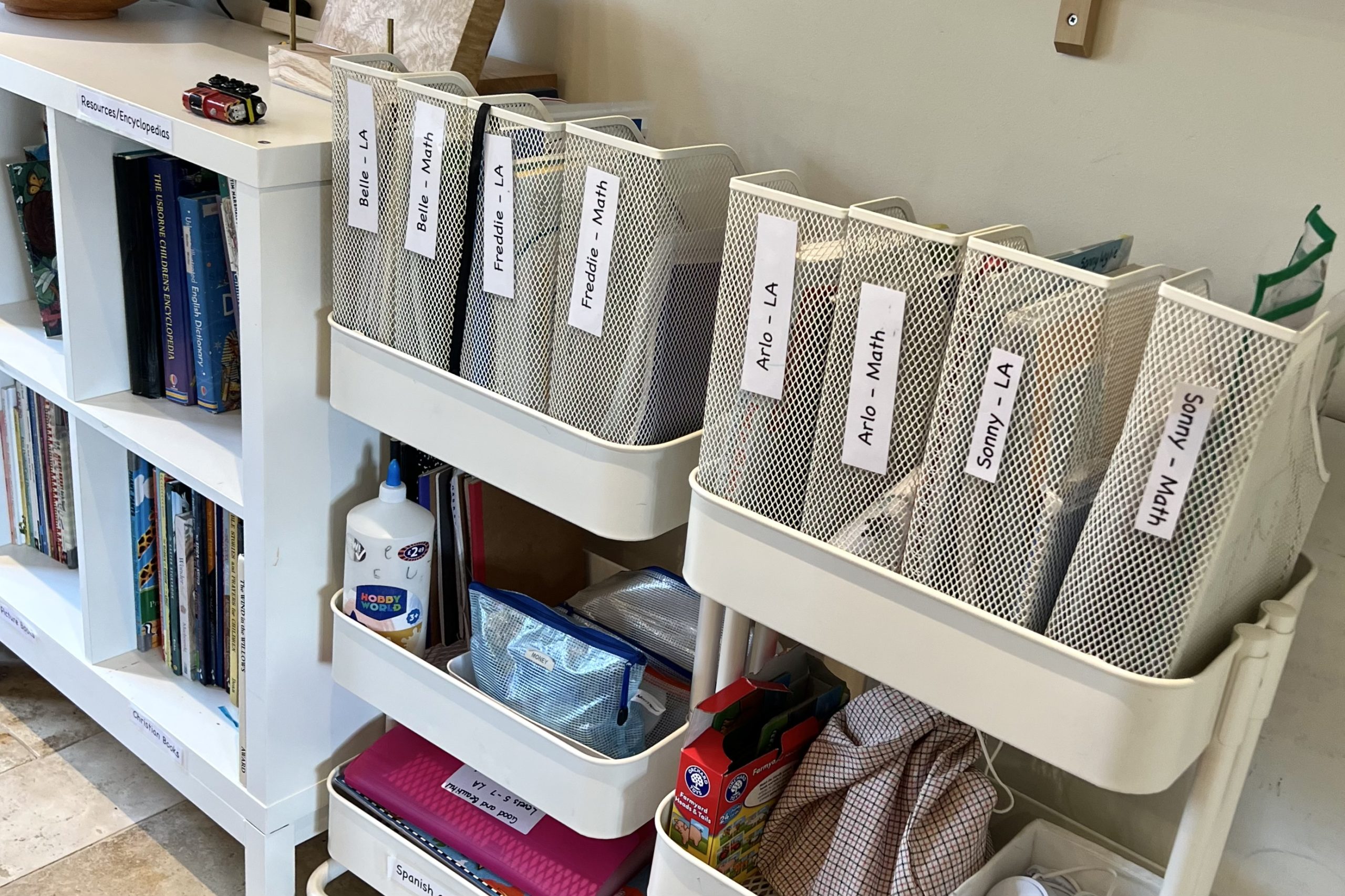
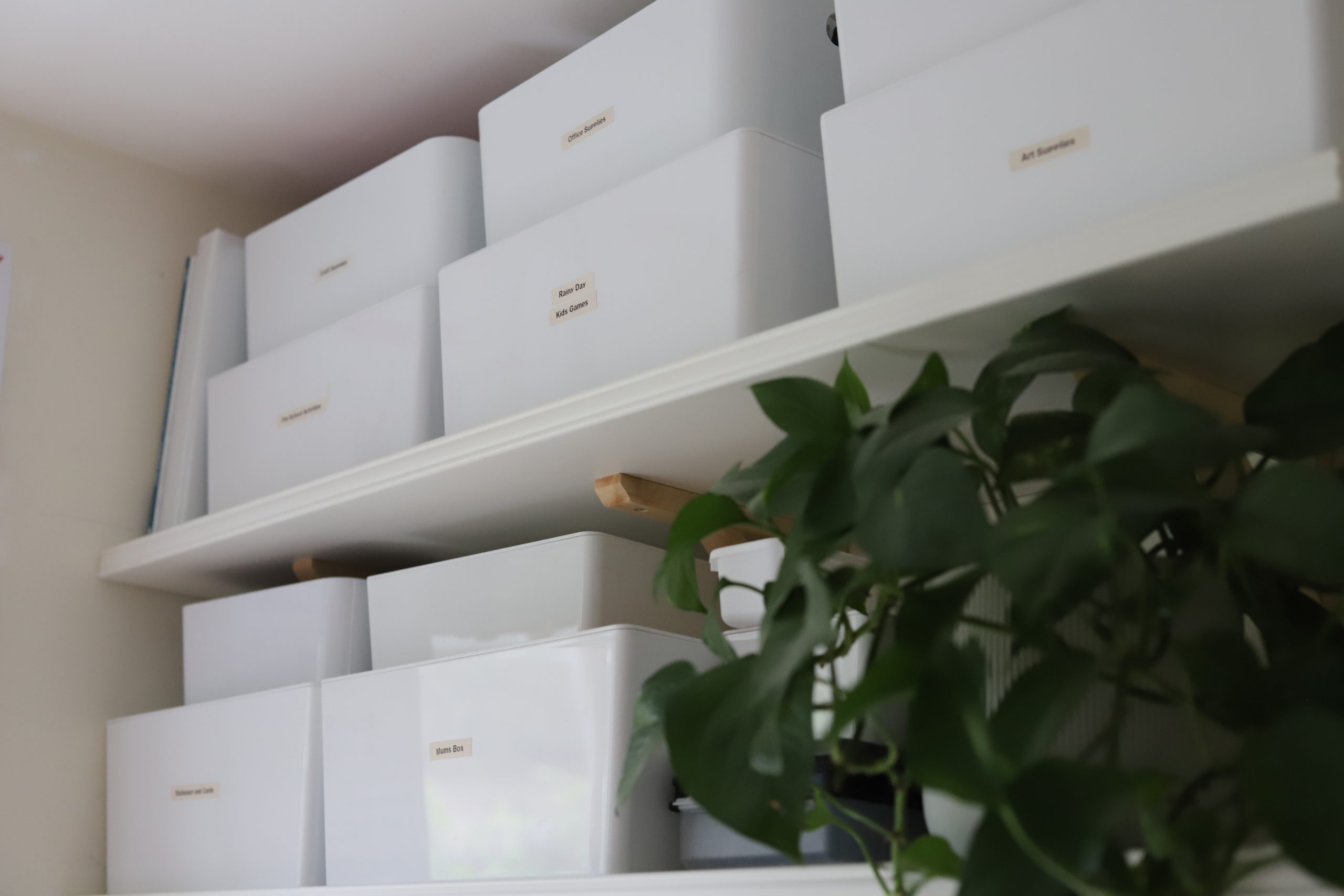
Anything messy, like art supplies, puzzles, games etc I keep up on these high shelves so that the little ones cannot access them without me. With toddlers and babies hanging around the school space, there is some damage limitation steps to be taken in the planning.
All of our resource/non fiction books live here in the school area. Partly so that they stay in somewhat reasonable condition but mainly so that I know where they are when we need to refer to them. The kids often take books from here but they know it is like a library and that they have to return them to this bookshelf when they are done.
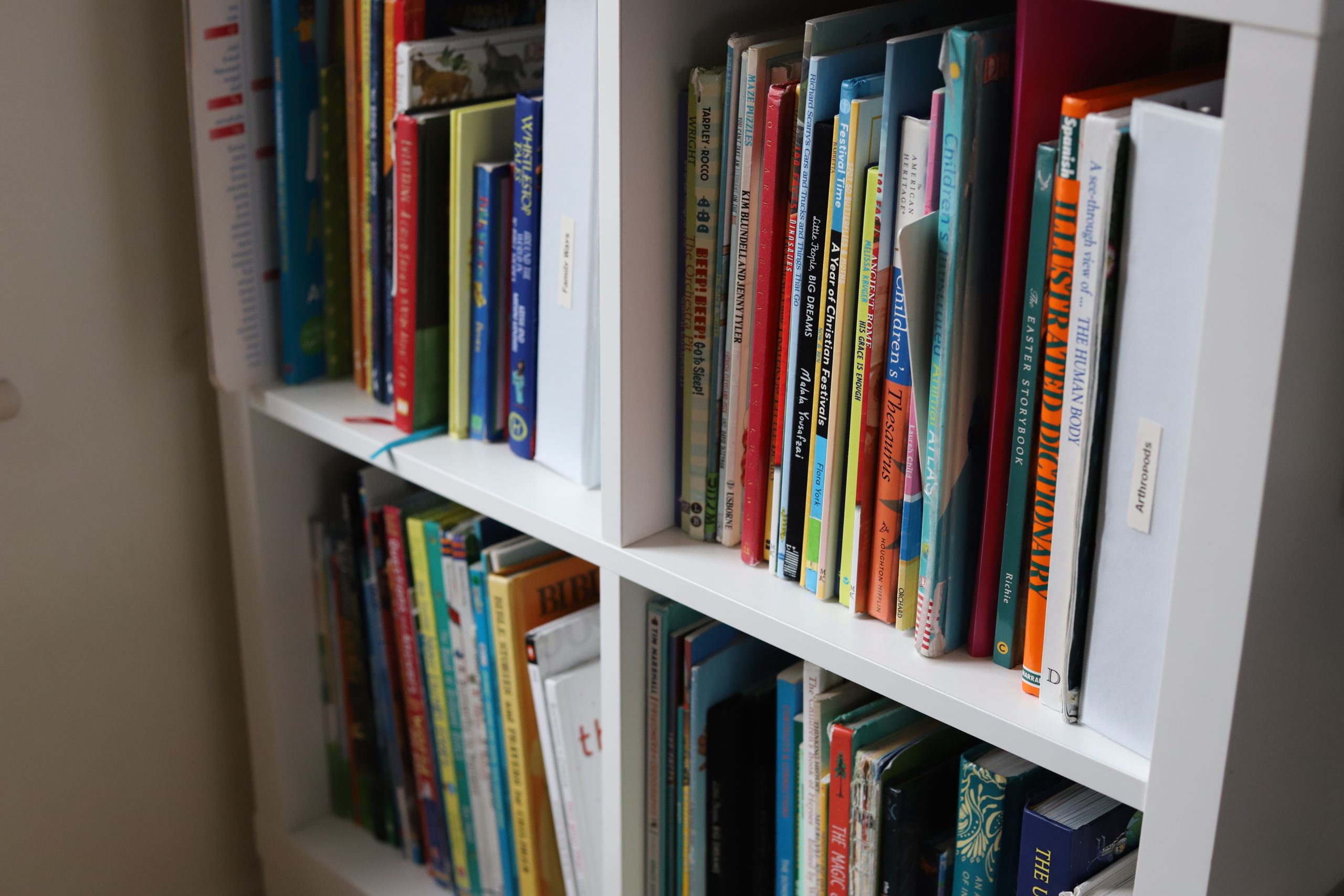
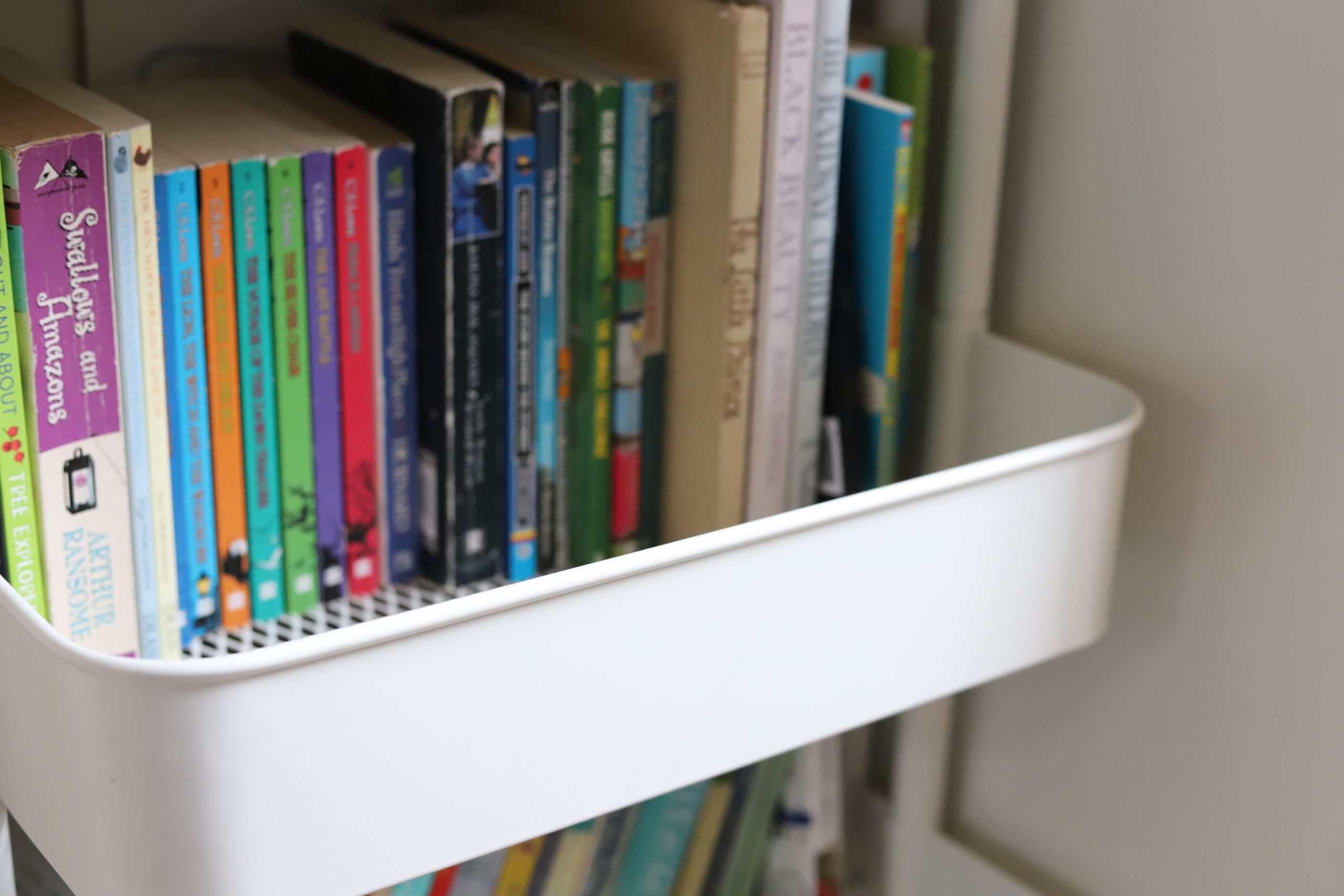
I love picking up the more expensive resource books in charity shops and thrift stores. They are usually only a couple of pounds and worth their weight in gold. Some of my best finds have been at the National Trust second-hand book shops – if you are there check them out!
There are certain things that I keep out for the kids to access whenever they want. A big pile of colouring books for the younger ones, a cart of various papers (white, card, coloured), marker pens, crayons and coloured crayons, glue sticks and tape. They have all also loved doodling endlessly with whiteboards and wipe clean pens. I like to keep all of that stuff out and accessible.
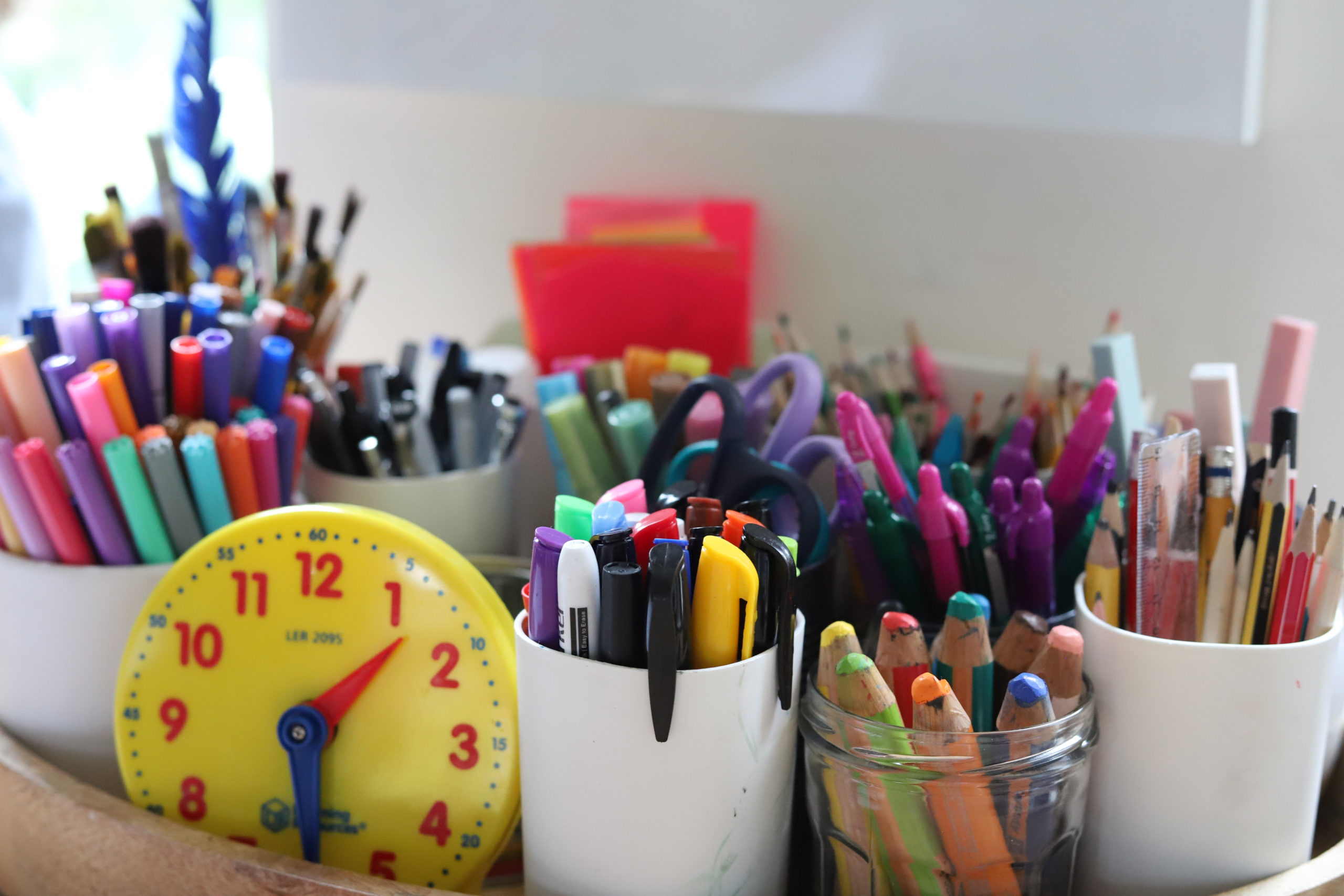
Whilst I do dream of a dedicated school room one day, this space works for now. We are pretty ‘low tech’ with our homeschool. We have a couple of laptops available for typing class and any videos that they need for their lessons, but aside from that it is all pens and paper. I am sure that as we move into higher grades the tech needs will increase and that will require a rethink about workspaces and how we manage all of that.
Having this space also also be our meal table means that we are forced to clear up twice a day. Whilst that can sometimes be a pain, the benefit is that there is no carry over mess. If the kids need to carry on working on something after lunch then they place whatever it is on top of the printer so that we know what we need to come back to.
For now I really do enjoy having them all learning in the same room. It is great for the younger ones to see what is ahead of them and I have found that they actually absorb so much of the higher level learning that is going on around them. My three year old has some random multiplication facts memorized just because he has heard the older kids practicing. He doesn’t understand 2 + 2 but he will tell you that 7 x 8 is 56 because he has been listening to the memorization songs that we’ve used for years.
J works from home some of the time these days, so if someone needs some extra quiet they can go and perch on the end of his desk and work, especially for something focused like a writing piece or an assessment.

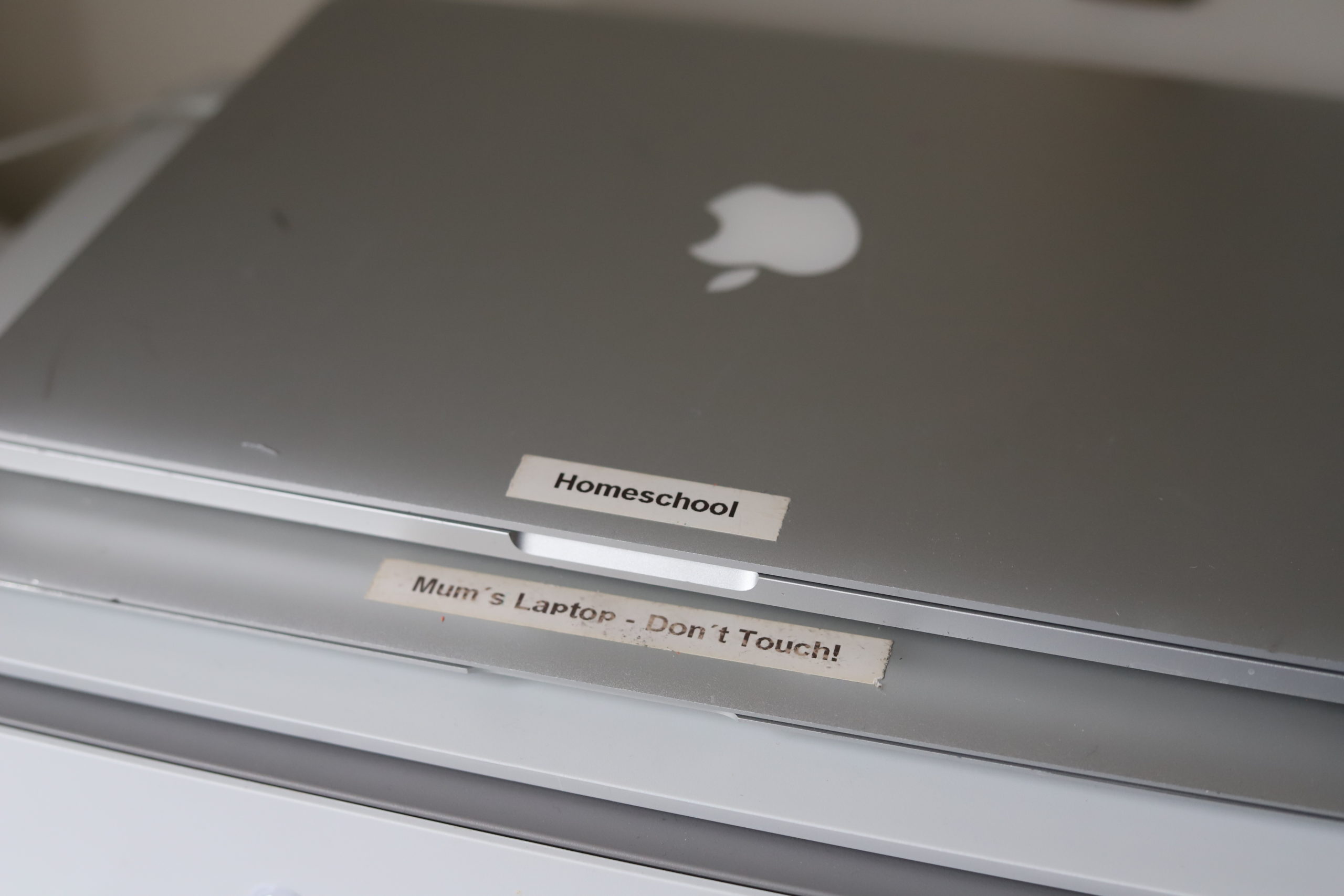
So how do we make it work?
Systems, schedules, minimalism and organization… and a few golden rules
- Anything that doesn’t need to be here, isn’t here. Toys are not welcome here. No toys at the school table or the dinner table – that helps keep this space functional.
- Each child has folders for their course books and they have to clear them away each day. Everything is labelled so that even the little ones know how to put everything away.
- I have a line of string around the ceiling where we can hang special art work and projects to save on wall space and paper clutter.
- I have one drawer where I put any papers/drawings that are unclaimed or left out. Every couple of months I will put it on the table and set a timer. They have 20 mins to take what is special and add them to their art/keep folders in their rooms – the rest gets recycled. This system works SO well. Often that scribble doesn’t feel as special to them weeks later and they are happy to let it go.
- We have a daily schedule so that everyone knows when the table is being used for school vs. meals.
- We have two clean up times a day – before lunch and before dinner because this space gets such heavy usage that it needs it to stay manageable. This area gets wiped down and hoovered multiple times a day.
- We have to learn to work together in a small space. There is an expectation of quiet when we are doing our skill subjects. Sometimes I will play instrumental music quietly or light a candle to help encourage a calm environment or when they are bickering. It is amazing the calming influence that a single candle can have!
- No interruptions – I have a time set aside to work with each child 1:1. The other children are not allowed to interrupt (aside from emergencies obviously) during that time. If they are stuck they have to highlight what they are stuck on and move onto something else. I will then go over their highlighted spots when they have their 1:1 time. This means that all working around one table is possible. Notice I said possible, not perfect.
- I try really hard to avoid using bedrooms for school work. Sometimes if the older kids need to read something intense or take a test then I have to use bedrooms for quiet space but I do prefer to keep their bedrooms just for rest and not work. I even try and send them to a room that is not their own to help keep work and rest associations separate.
I would love to know how other families without a school room make it all work. Let me know if you have any tips.



